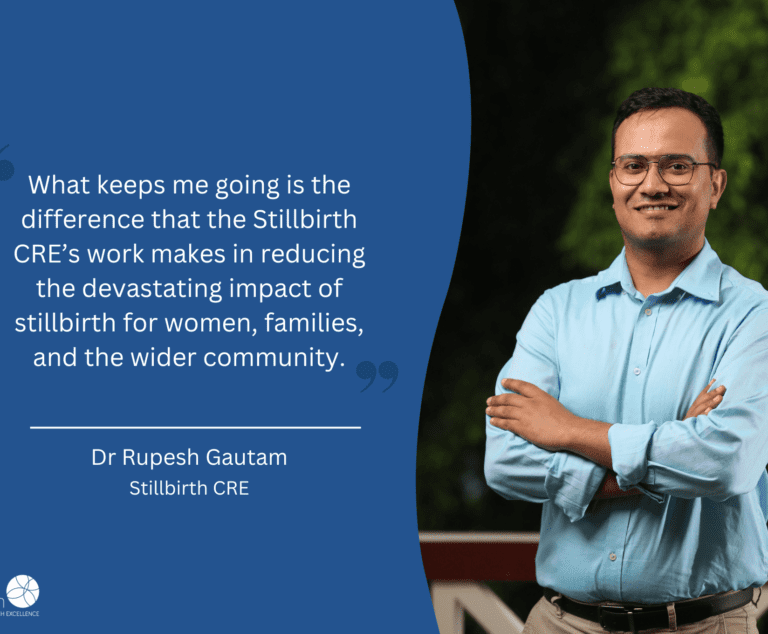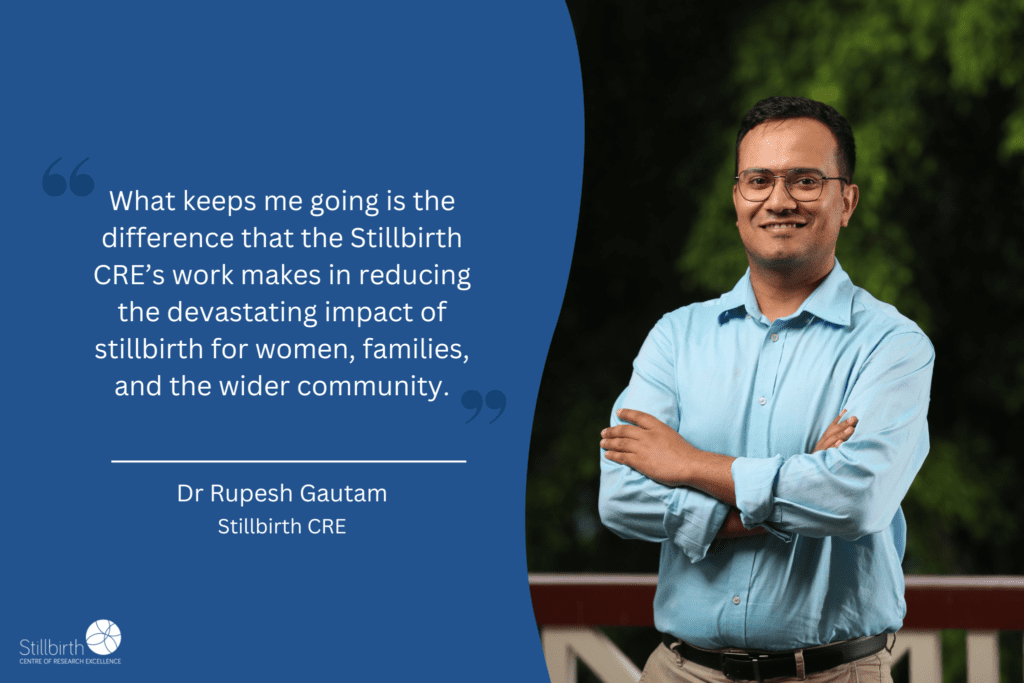About Us
Researchers + Clinicians
Parents

Get to know our researchers here at the Stillbirth CRE! This week, we had the pleasure of spending a few minutes with Dr Rupesh Gautam, where he shared insights into his current projects and why he is passionate about his work here.

I coordinate projects that fall under the Equity and Diversity (E&D) stream at the Stillbirth CRE (CRE).
I initially joined the CRE to work on COCOON study, which is a multi-country research study to understand the challenges and concerns of parents who were pregnant or had recently given birth during the COVID-19 pandemic outbreak. Later I moved on to working in the E&D stream – something that I am currently involved in.
My current role involves coordinating projects where the CRE and our partners are working with Aboriginal and Torres Strait Islander as well as culturally and linguistically diverse (CALD) communities in Australia. These projects aim to identify the cultural needs of those communities in stillbirth prevention by having conversations with the community members and health care providers. The ultimate goal is to contribute to reducing stillbirths in the target communities as envisaged by The National Stillbirth Action and Implementation Plan.
What keeps me going is the difference that the Stillbirth CRE’s work makes in reducing the devastating impact of stillbirth for women, families, and the wider community. The CRE’s work with Aboriginal and Torres Strait Islander as well as CALD communities is also contributing towards making our health system more sensitive towards the needs of these diverse communities, and I am proud to be associated with this work.
I intend to continue working in research and to use my knowledge and experience in improving population health, with particular emphasis on equity and social determinants of health.
I spend the most time outside of work with my wife and our two-year-old son. We enjoy exploring the great Australian outdoors together.

Level 3, Aubigny Place
Mater Research Institute
Raymond Terrace,
South Brisbane QLD 4101
The University of Queensland Faculty of Medicine